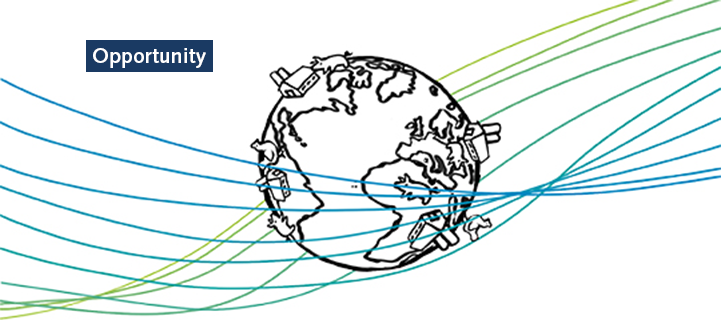
Published on Feb. 1, 2022
Making pork production climate neutral
Climate neutrality could be the next frontier for pork production. It moves our industry closer towards a sustainable future. Join us as we explore new opportunities and innovations that can make pork production more environmentally friendly.
Being climate neutral refers to achieving net zero greenhouse gas emissions including carbon dioxide. We can all agree that in an ideal world, agriculture would move past reducing emissions and be a part of the solution to eliminate greenhouse gases. There are a number of opportunities to seize upon in order to take efforts in environmental impact to the next level.
What does society need to address to be more sustainable?
In the context of the intensification of pig production and consequent higher animal densities, the environmental effects must be considered. Global issues such as greenhouse gas emissions from livestock production are becoming internationally recognized. Animal agriculture as a whole contributes a small part to total greenhouse gas emissions in the U.S; pork production accounts for less than 0.3%, according to the American Farm Bureau, with data compiled by the EPA.
Sustainable manure management
The main direct environmental impact of pig production is related to the manure produced. Appropriate storage can reduce the amount of greenhouse gases released, and the production of combustibles through bio-digestion can help to make optimum use of the natural resources involved in the production cycle. The Life Cycle Assessment (LCA) approach to measuring greenhouse gas emissions related to pork production indicates that it tends to have lower emissions than ruminant production systems.
The level of manure utilization defines the amount of nutrients released into the environment. Such nutrients can contribute significantly to increased soil fertility when used appropriately, but an overload of nutrients and other substances can lead to soil and water degradation. High-density pig production can release excessive amounts of nitrogen and phosphorus into the environment, and the high doses of copper and zinc fed to pigs to promote growth eventually accumulate in the soil.
Taking the first steps
Pork producers can minimize the emission of greenhouse gases through a series of measures. The first one is the modification of pig diets, something that is already being worked on by swine nutritionists, through diets with lower protein levels and the utilization of by-products in the diet. Other measures to reduce or minimize greenhouse gas emission would include manure – and crop management.
The production of 1kg pork leads to the equivalent of 7.2 kg CO2 emission. Almost half of it comes from feed, by improving feed conversion we reduce the CO2 emission related to feed. The other half comes from land use change (change in biomass and soil carbon) and on farm processes (fertilizer, manure, and farm machinery). The remainder, about 15%, comes from transport, processing, packaging, and retail. The use of modern, improved genetics has a tremendous impact on the environmental impact of pork production. Research has shown that over the last decades the output in pork production has more than doubled through genetic selection, selection for more efficient production.
The Hypor breeding program is geared towards delivering self-reliant animals, animals that live long and prosper. Reducing environmental footprint through the reduction of ‘waste’. Decreased mortality, increased efficiency, animals that are able to overcome challenges and thus stay alive and productive. More efficient animals have a positive impact on the land use, animals that eat less (require less input) need less feed stuffs and thus lead to a reduced land use. Future pigs need to cope well with alternative diets, most likely poorer diets, sustainable conversion is a better measure of GHG gasses/CO2 eq. use per kg of pork produced. By selecting on sustainable conversion, we should be able to create carbon neutral pork.
You've read an opportunity article. Interested in the solution or challenge?
Do you want to explore all articles?
